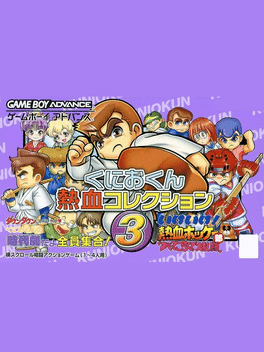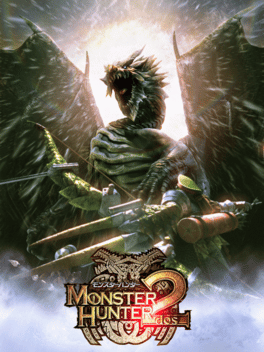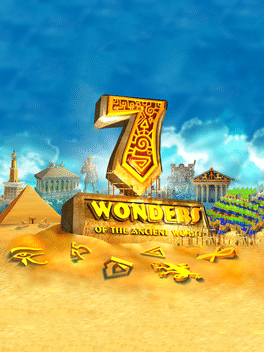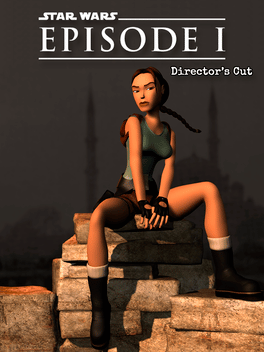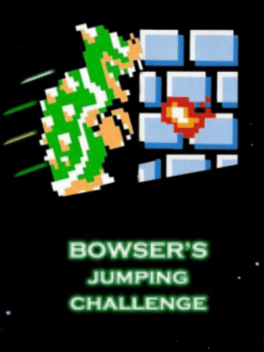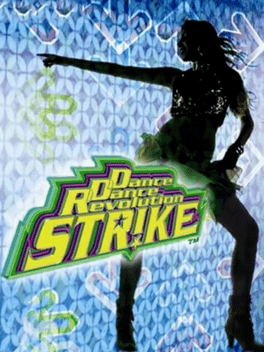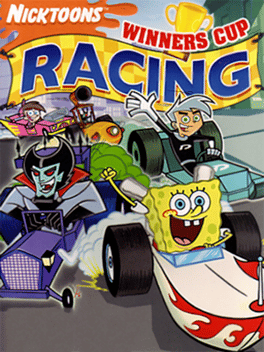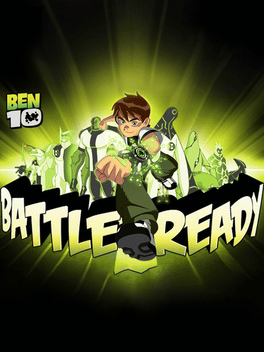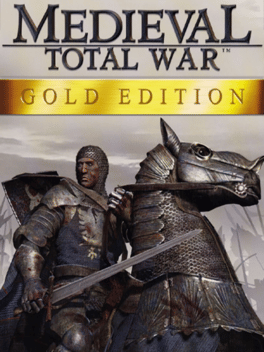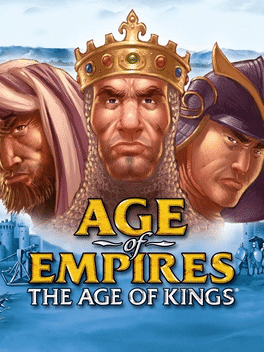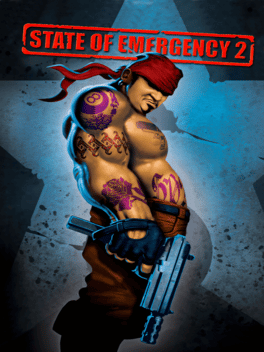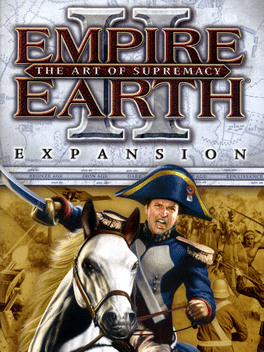New Games - Page 10299
-
Bleach: Hanatareshi Yabou
2006
Hanatareshi Yabou is the second Bleach game to be released for the PS2. The game was released in Japan on February 16, 2006. The game is a sub story of the manga. The player can encounter original characters from the series. In addition, secrets and extras can also be unlocked. After the credits, Urahara Shop can be accessed. This was the first adventure role playing Bleach game ever to come out. Hanatareshi Yabou's opening theme song is Ichirin no Hana by High and Mighty Color. -
Kunio-kun Nekketsu Collection 3
2006
The third and final Kunio-Kun collection for Game Boy Advance. It features the Famicom versions of: - Downtown Special: Kunio-kun no Jidaigeki da yo - Zenin Shūgō! - Ike Ike! Nekketsu Hockey-bu: Subete Koronde Dairantō Both remained identical to their original editions. -
Monster Hunter 2
2006
Monster Hunter 2
2006
star 7.9Monster Hunter 2 has an improved weapon tree and upgradeable armors. As in all Monster Hunter games, armor pieces can be worn to obtain skills and abilities. A new feature in Monster Hunter 2 is the use of gems. Gems add skill points to complement those added by armor and weapons. Gems are created by combining ore and/or monster parts. Gems can be attached and detached from armor and weapons that have special gem slots. Along with the various species of monster returning from the first Monster Hunter, Monster Hunter 2 contains many new monsters, such as the metallic wind dragon Kushala Daora, the lion-headed dragon Teo Teskatoru (named Teostra in the North American and PAL versions of Monster Hunter Freedom 2) and his female counterpart Nana Teskatory (named Lunastra in the North American and PAL versions of MHF2), the primates Babakonga and Dodobrango (Congalala and Blangonga in MHF2), the bull or minotaur-like monster Rajang, and the chameleon-like dragon Oonazuchi (Chameleos in MHF2). With new monsters also com -
7 Wonders of the Ancient World
2006
star 4.9Players take the task of reconstructing the 7 Wonders of the Ancient World. In each wonder, there are 5 to 7 sub-levels of runes that players switch to form a row of 3 or more runes. There are two modes of play: Free Play and Quest Modes. In Free Play, players can choose to play any level they have completed in Quest Mode. -
Star Wars: Empire at War
2006
star 7.3From the lives of soldiers to the deaths of planets, you are the supreme galactic commander. It is a time of galactic civil war. Take up the reins of the Rebellion or assume control for the Empire. Whichever you choose, it will be up to YOU to steer your side to ultimate victory. Command everything from individual troops to starships and even the mighty Death Star as you execute campaigns on the ground, in space and across the galaxy. Forget tedious resource gathering – just jump straight into the heart of the action. You can even change Star Wars history! Every decision affects your next battle and every battle helps shape the fate of the galaxy. -
Star Wars: Episode 1 - Director's Cut
2006
This is a Stand Alone Game. It is not compatible with the Lara At The Movies project and cannot be substituted into that game. It is a tribute to the wonderful Star Wars adventures. This release is in response to feedback from some players who had difficulty with the original Lara at the Movies version of these levels. I have called this new release the Director's Cut as it contains material not included in the original version (one new playable level and two cutscenes). The original levels have been significantly revamped with revised texturing, atmosphere and additional audio. The timed runs and podracing events should now be playable by players of all skill levels. This TRLE was placed in the trle.net hall of fame in 2007. -
Bowser's Jumping Challenge
2006
Super Mario Bros. Bowser’s Jumping Challenge is a SMB1 hack for the NES. -
God's Playing Field
2006
God's Playing Field
2006
God's Playing Field is a point and click game that' played exactly as it sounds. You're a god that's probably bored of your day job, and now it's time to destroy everything! You'll have different tools available to you as you destroy more things, so there's only one way to play this - destroy anything that moves. -
Dance Dance Revolution STR!KE
2006
In addition to including features from the previous game, PS2 gamers will now have the opportunity to participate in exciting head-to-head DDR online competitions for the first time ever. The 100 top scorers will be recognized through an interactive ranking system, letting novice players test their dancing mettle against top-notch DDR experts. Players can also go online to access new challenge missions which will be refreshed periodically, allowing players a way to continually expand the DDR gaming experience. Whether players are looking to dance to the hottest tracks in town, choreograph, edit and create their own dance steps, or use the 'Work Out' mode to burn off excess pounds, DDR STR!KE will offer players of all ages an interactive and fun way to get up and groove. The game's support for the EyeToy Camera continues to add depth and dimension to the gameplay. While using the camera, players can access fast-paced mini games and use both their hands and feet while dancing and watching themselves on TV. Keeping pl -
My Raising Diary
2006
My Raising Diary
2006
At a particular research establishment, a study has been taking place in order to create a synthetic life form that will have more superior abilities than a human. The study had finally yielded results, but... The protagonist who is working there ends up being forced by the other researchers on the same team as her to raise the synthetic life form. Since she was young, she has been called a genius, and has no memories of being treated like a child, so even though it's a study, the protagonist, who hasn't really known a parent's love, feels uneasy about raising a child... -
Spooks
2006
Spooks
2006
There's really no better way to spend a day in the Land of the Dead than at the Carnage-Val...there are rides, games, and a veritable sideshow of quirky employees. However, for one little ghoul named Mortia, things are about to take a dive out of the ordinary. After a smooth-talking skeleton challenges her to a game of darts, she wins the most unbelievable prize she's ever laid eyes on: a live goldfish! A moment later the skeleton has fled, leaving Mortia with the task of finding her fish Spooks someplace safe to be "alive." If she doesn't help her little Spooks, and soon, he may die. Apparently, this is rather unpleasant. -
Ben 10: Battle Ready
2006
Ben 10: Battle Ready
2006
star 6Gwen and Grandpa Max have sent Ben to an abandoned Sumo Slammer Card factory to train with his new found powers, but the simple exercises turn into a trial when the evil Vilgax detects the Omnitrix's power signal and sends his robot drones to retrieve the device at any cost! Training can wait. It's hero time! Battle Ready is the first Ben 10 game on the Cartoon Network website. -
Medieval: Total War - Gold Edition
2006
star 5Medieval: Total War - Gold Edition is a Strategy game, developed by Creative Assembly and published by Sega, which was released in 2006 and included the Viking Invasion expansion. -
Age of Empires: The Age of Kings
2006
star 7Age Of Empires: The Age Of Kings is a portable version of one of the best-selling RTS games ever! You'll command five different civilizations, as you move from the Dark Ages through the Middle Ages, with one goal in mind: Domination of the known world. New combat advisor gives you advice on campaign strategies Gain empire points to unlock maps & units and improve emperor rank Multiplayer scenarios allowing up to 4 players to battle each other wirelessly. -
State of Emergency 2
2006
State of Emergency 2
2006
star 3.5State of Emergency 2 (State of Emergency Revenge in Japan) is the sequel to State of Emergency. The game is available on PlayStation 2. It takes place ten years after the first game. It features more game modes and an enhanced engine. State of Emergency 2 was being developed by VIS Entertainment for Rockstar Games, but the title was continued by SouthPeak Interactive with developer DC Studios. -
Marc Ecko's Getting Up: Contents Under Pressure
2006
star 6.5Play as Trane, a "toy" graffiti artist with the street smarts, athletic prowess and vision to become an "All City King" - the most reputable of all graffiti artists. Along your quest, uncover the mayor's deep, dark secret and use your fighting talents and high-wire graffiti to expose the city's leader as a corrupt tyrant. As you struggle to save a neighborhood from an oppressive government, one question stands out: What if graffiti could change the world? Risk your life battling city authorities and rival graf gangs - mere obstacles in your attempt to get your tag up. And in this city, not just any tag will do. You have to "Get IN, Get UP and Get OUT". Combat: master a unique fighting technique and use improvised weapons Graffiti: create tags in pressure situations, using multiple skills and styles Intuition: follow your sixth sense to find the best spots to tag Sneak mode: infiltrate areas and avoid capture as you creep silently through the city Navigation: utilize a unique guidance system to "get up" and tag -
Empire Earth II: The Art of Supremacy
2006
star 6Empire Earth II: The Art of Supremacy will return gamers to the front lines of the greatest battles in history with new civilizations at their command, new campaigns and a host of new features that make this year's best strategy game more addicting than ever. Bold victories on far-off battlefields, from wintry Russian plains to scorching African deserts, will establish the player's undisputable reputation as the world's greatest leader - past, present and future. -
Phoenix Drive
2006
Phoenix Drive
2006
A vast what-if story of Gyakuten Sai*** (Ace Att*rney)...... The necromancer came back to Phoenix giving 100% at work as a lawyer with the painful memory of Mia's death. Wild debauched days of him and the girls has just begun!!! -
1213: Episode 2
2006
1213: Episode 2
2006
1213: Episode 2 is the second game in Ben "Yahtzee" Croshaw's sci-fi adventure series, 1213.


